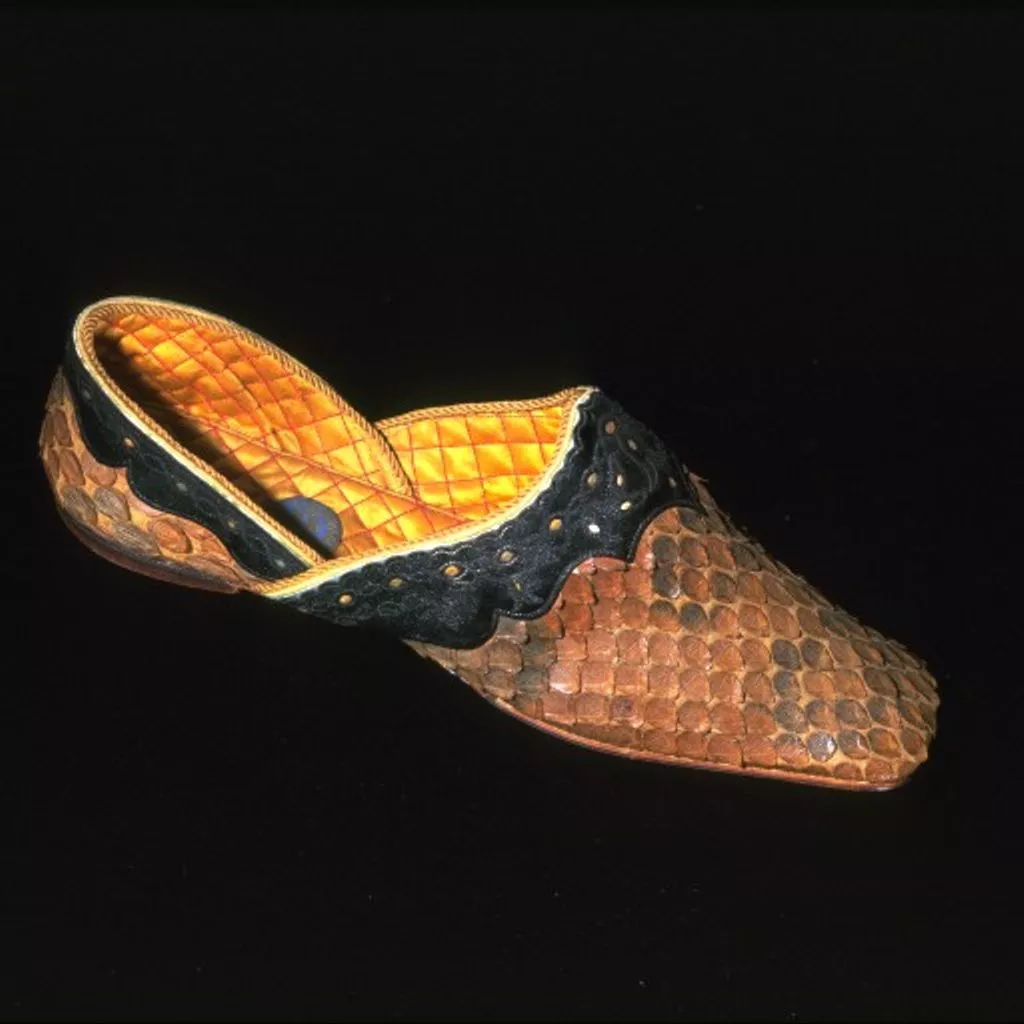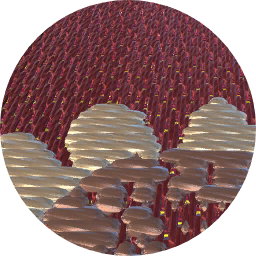1850 / 1870, Edinburgh
1850 / 1870, Edinburgh
- Identifier
- AP.6&A-1868
- Carried out by
- Muir, W (http://data.silknow.org/activity/designer)
- Collection
- Technique
- Embroidery 67%
- Embroidery 99%
- Embroidery 100%
- Embroidery 92%
- Embroidery 58%

- Depiction
- Geometrical motif 80%

- Geometrical motif 59%

- Geometrical motif 80%
- Dimension
- 9.5 cm (height)28 cm (length)10 cm (width)
- Production time
- Production place
- Type of object
Description
Men wore mules and slippers in the comfort of their homes. These were often not dissimilar in design to men's slippers today. They came in a variety of colours and materials and were often decorated with embroidery and fancy stitching.
Materials & Making
This pair of slippers is very stylish and was made by the Edinburgh manufacturer, W. Muir. By the middle of the century many slippers were mass-produced. The sewing machine had become proficient for sewing cloth by the 1850s, and a machine for sewing leather was in use in by 1856. Other machinery was developed for sewing on soles and for riveting. Shoe makers and manufacturers used new and old techniques to create fancy leather work and tooling. The range of materials used for the uppers for men's slippers increased, and included snakeskin, crocodile or alligator skin as well as the more usual types of leather.
Design & Designing
Many slippers were, however, still made at home. Demonstrating their domestic skills, women embroidered the ready-made uppers of slippers and other footwear for their families as well as for themselves. Patterns for these were readily available, although the results were sometimes gaudy as some of the colours favoured for embroidery were produced by bright chemical dyes. Made of snakeskin with very large scales, with decorative leather trimming in black and lined with quilted yellow silk. Hand and machine stitched. British Galleries: A man was often most at home in the comfort of his dressing gown and slippers. Slippers could give men the chance to liven up their appearance. They were often brightly coloured or richly decorated in contrast with the sober appearance of more formal clothes. [27/03/2003] A gentleman's slipper, made of snakeskin, by W. Muir, Edinburgh, 1859-1870.




